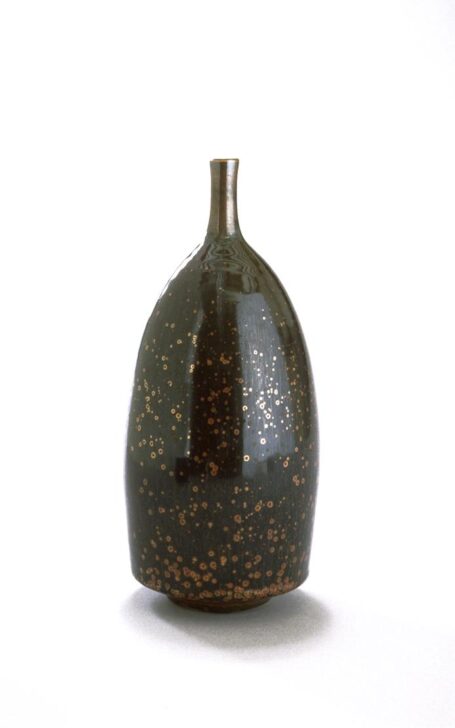Starlight
Chun Wen Wang

Description
During the Muromachi period in Japan (1333–1573), trade with China was often handled through the agency of Zen Buddhist monks, who had learned Chinese through their religious studies. Several Zen monks traveled in person to the great Chan monasteries in southeast China and on their return brought back not only new Buddhist teachings but also the material and visual culture of late Song and Yuan dynasty China. As a consequence, the Zen monasteries of Kyoto became centers of Chinese learning and promoted the study of Chinese poetry, painting, and the art of drinking tea. The tea bowls the Japanese monks discovered in southeast China were the black glazed ware from the Jian kilns, known in Japan as tenmoku. The most highly prized varieties of tenmoku were those with the descriptively named "iridescent", "oil spot", and "hare’s fur" glazes. Modern potters in both China and Japan continue to work in these glazes to satisfy the contemporary market for tea wares. This object is an example of modern tenmoku ware.
Physical Description:
A stoneware vessel with black glaze and an “oil spot” design. Is is on a footing and has a thin neck.
Usage Rights:
If you are interested in using an image for a publication, please visit https://umma.umich.edu/request-image/ for more information and to fill out the online Image Rights and Reproductions Request Form.